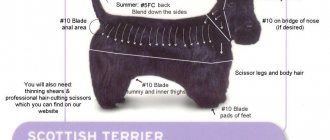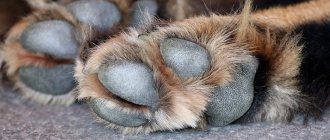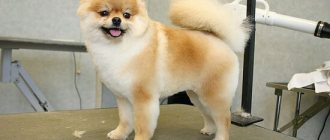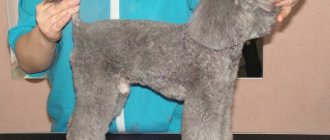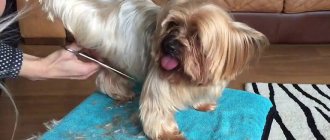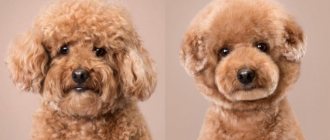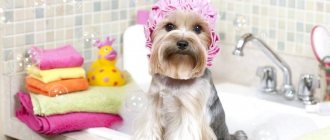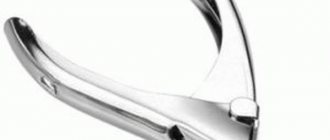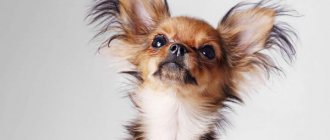In order not to harm the health of your pet, you need to know in what cases dog grooming is allowed or even recommended, and in what cases, on the contrary, it is prohibited. The fur of these animals not only serves to keep them warm, but also protects them from heat. However, many owners are mistaken, thinking that in the summer the animal experiences severe discomfort due to fur. This creates a false need to groom your pet. Leaving the dog without natural protection, the owner exposes the pet's skin, which is devoid of sweat glands, to the aggressive effects of sunlight, as well as other environmental factors.
If the procedure is acceptable for a given breed, the haircut should be carried out in accordance with all rules and recommendations. You can cut your dog's hair either at home or in a salon. And it is better to seek help from a professional.
Dog grooming
Why do you need a haircut?
Just as a trimmed person looks neat, a trimmed dog looks neat and well-groomed. In addition to the aesthetic function, in four-legged animals this procedure also has hygienic functions - the dog gets dirty less on the street, and it is easier to notice parasites or skin rashes on short hair. Puppies begin to be introduced to a comb at the age of three months, and closer to six months, they undergo grooming or trimming, depending on the breed.
What breeds need a haircut
All long-haired breeds get their hair cut from time to time. Even exhibition specimens, for which hair is a wealth and dignity, are met with a machine or at least scissors before the exhibition. The hairstyle is given the desired volume, shape and emphasizes the dignity of the constitution. If the dog does not shine in the ring, then a short coat will make life easier for him and the owner.
Which dogs don't need to be groomed?
Short-haired breeds already feel great, but they need to be brushed - this should be done especially often during shedding. A brush or furminator removes dead hair and stimulates blood circulation near the hair follicles, making the coat shiny and healthy. The pet sheds less, so you can clean the house a little less often.
Wire-haired breeds (Airedale terriers, Hungarian Vizslas, schnauzers and some others) are not touched with scissors and clippers so as not to spoil the quality of the hair, but they undergo a procedure such as trimming once every 3-4 months. This is pinching off regrown hair along the body and head; scissors only shape the paws and mustache with a beard.
Among long-haired dogs, there are breeds that are not cut. Due to the special structure of the hair, tangles do not fall off. These are mainly northern sled dogs: Samoyeds, Laikas, Huskies, Malamutes and individual representatives of other groups, for example, Collies, Shelties, Chow Chows, Bernese Mountain Dogs, Australian and Belgian Shepherds.
Hygienic and health purposes
Dog grooming at home for hygienic purposes is carried out in order to:
- notice and remove ticks in time during their activity, especially if the dog is a frequent visitor to the forest and nature;
- after a walk in bad weather, do not wash the entire pet, but only its paws;
- simplify combing and minimize the likelihood of matting;
- protect your pet from heatstroke in very hot weather;
- maintain a well-groomed appearance;
- the face and ears do not get dirty while eating if the food is natural or moist.
But you shouldn't shave your animal's head. When shaving, heat exchange is disrupted, irritation may begin on delicate skin, and in the summer your pet can get solar dermatitis and even neoplasms. Therefore, they are limited to some type of haircut.
What is grooming
Grooming is a set of hygienic procedures for caring for the fur, claws, ears, eyes and skin of pets.
What dog breeds need grooming?
Grooming is a useful care procedure recommended for dogs of different breeds and ages.
The owner can independently perform all pet care procedures using special accessories and hygiene products designed for dogs.
Professional grooming, performed by masters in specialized salons, is necessary for dogs with thick and coarse hair, representatives of decorative breeds, as well as for pets participating in exhibitions and competitions.
Dog breeds that require professional grooming:
- poodle;
- Yorkshire Terrier;
- Pomeranian Spitz;
- retriever;
- spaniel;
- lapdog;
- chow-chow, etc.
Types and models of haircuts
Hairstyles are divided into three types:
- Hygienic
- This is done for hygiene purposes. With it, the hair that bothers the dog on the paws and between the toes, in the groin, on the face, and inside the ears is cut off. The length of the fur on the body is at the discretion of the owner - from almost full to several millimeters.
- Model version
– this is the scope of the groomer’s imagination. Techniques that are used with it: clippervek - shaving bald areas along the body; flatvek – alignment of length into a straight line; blending – smoothing the transitions from long hair to medium and short hair using thinning scissors. A model haircut may include a top note (braids, ponytails with bows and clips), toning, and coloring.
- Show-trim
- This is exhibition grooming, which in each breed has its own clear canons. It is usually performed in a salon.
If you are not a professional hairdresser, groomer or breeder, then you should not immediately take on exhibition and complex model options. But even a beginner can easily cope with the hygienic look - you can cut your dog’s hair for both the summer and autumn-spring seasons.
Main stages
At the preparatory stage, it is recommended to bathe the dog, thoroughly washing the coat with hygienic shampoo, drying and combing the coat and undercoat with a comb or comb.
The next stage is a hygienic haircut, which involves trimming split ends and cutting off hair in visible areas in the area of the ears, paws, eyes, nose, genitals, and torso.
To remove hair in the genital area and on the abdomen, use a trimmer. These procedures require the master to be extremely attentive and careful to avoid inadvertently injuring the animal.
Hair on the paws, tail and body can be removed using either the same trimmers or regular scissors.
In most cases, it is recommended to leave the height of the coat on the main areas of the body at least 20 mm.
Rules for beginners
There are some points that must be observed for the safety of your pet:
- It is better to secure the pet. Grooming tables provide this opportunity - they are secured with a noose on a special stand and have an anti-slip coating. If buying a grooming table is not in your plans, use a rubber mat and an assistant who will restrain an animal that does not want to stand still.
- The machine needs to be moved parallel to the skin along the hair growth. When there are folds, they are straightened out - and only after that they are cut so as not to injure the skin and cut to the same length.
- Trim only a dry and washed animal if you do not want to dull and damage the tool.
- When the process is finished, check to see if the skin is damaged. If there are wounds, they must be disinfected with special powder or chlorhexidine.
- Nails need to be trimmed very carefully, especially when they are dark in color. Keep hemostatic powder or at least hydrogen peroxide ready, as even experienced groomers have such incidents.
The entire tool must be well sharpened, otherwise it will tug and pull the wool, causing unpleasant sensations and forming not the best associations with the haircut. Clippers and scissors should be stored dry and closed.
Precautions
How can grooming a dog be dangerous? Injuries. If the procedure is new to your pet, or you decide to do it yourself for the first time, there is a possibility of injuring the animal through careless actions. To prevent this from happening:
- the dog must be well-walked, calm, and well-fed before the procedure;
- you must be confident in your abilities and know exactly what result you want to achieve;
- talk to your pet during the haircut calmly, affectionately, if necessary, stop for a while and offer him a treat;
- do not try to cut off as much hair as possible in one movement, do it little by little, gradually reaching the desired length;
- do not cut the hair too short - this can injure the dog with the tool or it will injure itself on the street (on dry branches, bushes, sharp objects).
Before the procedure, prepare the necessary emergency medications: hydrogen peroxide or any other antiseptic, a little sterile cotton wool or bandage. If you accidentally injure your dog, there is no reason to panic because everything you need will be at hand.
Tools and care products
The key to a successful and beautiful hairstyle is a quality tool. What can't you do without when grooming?
- scissors - straight and rounded, large and small;
- dog machine; You can, of course, try human hair, but the structure of wool and hair is different, so it’s better to get a special tool;
- thinning scissors, if thinning is required;
- wide-tooth comb and brush;
- slicker if the animal has a voluminous undercoat;
- hair dryer;
- a tangle cutter will come in handy if the felt boot can no longer be disassembled with a comb;
- nail clipper for manicure, two types to choose from: guillotine or nippers.
As for care products, you will need shampoo for the type of coat your dog has, optional conditioner, peroxide or chlorhexidine, just in case. During show trim, fixing agents are often used - foams, mousses and varnishes.
Preparing the site, groomer and dog
Before you cut your dog's hair at home, you need to prepare for this event. The cutting area should be well lit. It is difficult to achieve this indoors with just daylight from the window - it is better to use additional light. Place the tool next to the table where you will be doing your hair and make sure that the sockets are within reach.
The groomer should wear a robe or old clothes because it can be very difficult to clean afterwards. You can wear a mask to prevent the cuttings from flying into your mouth and nose.
The surface on which you are going to carry out the procedure should be at a height that is comfortable for you - it is uncomfortable to stand bent over, on the other hand - the whole dog should be visible. Ideally, the animal's withers are at the level of the groomer's chest.
Before sprucing up your pet, you should definitely take it for a walk and give it something to drink, but you shouldn’t feed it too much - some particularly impressionable individuals may begin to feel sick due to nervousness. After a walk, your pet should be washed with shampoo and conditioner, dried and combed. If necessary, use a mat cutter; before grooming, the matted fur must be all sorted out.
Step by step procedure at home
After the preparation has been completed, you can proceed to the main stage. At first everything may seem long, but in reality the procedure flies by.
So, everything in order:
- It is better to start a hygienic haircut with the least favorite procedure - trimming nails. Immediately after this, small scissors with rounded tips are used to cut out all excess between the fingers and pads, forming a neat round foot.
- The second step is to move to the head. Here the inside of the ears is trimmed, and the muzzle is shaped in accordance with the requirements of the breed.
- From the head a smooth transition is made along the neck to the shoulders and body.
- The groin is shaved with a clipper; boys are sometimes left with a “curtain” that covers their dignity.
- Along the body, the owner leaves the length that he wants, and depending on this, he works with a machine or evens out the bottom line with scissors.
- Small feathering is left on the paws or they form columns, like those of poodles. The tail is usually left brushed unless docked.
- The last step is to create a top note (“bun” from the bangs), if necessary. It is very important to tie the elastic bands and ponytails correctly and not to overtighten the ear - part may die and fall off.
The full length of the coat is rarely left during a hygienic haircut: usually it is cut short or a skirt of medium length is left. After the procedure, it is recommended to bathe your pet again to wash away short, prickly hairs and avoid skin irritation.
Possible difficulties
The theory is clear, but in practice everything may not be so smooth. It is especially difficult to predict the behavior of an adult dog that has never been groomed. Not every animal likes this process - it may be scared, and some become aggressive out of fear and try to bite the groomer. You need to be able to control the dog and finish what you started in any case.
If the animal behaves aggressively
An aggressive and angry dog also needs someone to cut its hair. Some growl and bite out of fear, some out of a bad temper, but there are several ways to deal with them.
Firstly, an aggressive animal behaves more quietly with strangers, so it is better to go to the groomer the first couple of times so that the dog understands that nothing bad is happening. Try to calm the animal, but if it still tries to bite, it is better to put on a muzzle and continue with your business.
In extremely severe cases, the groomer can offer sedation - this is an effective method, but you should not experiment on your own, since the dose of the sedative must be carefully calculated.
If the animal is very scared
A frightened dog needs to be calmed first. Talk to him quietly and confidently, because the owner’s fear and anxiety is transmitted to the dog. Let her get comfortable and smell the tools.
Try gently scratching your neck and letting him know that it's not a big deal. If you are afraid of a hairdryer, then do not dry the animal: wash it the day before and let it dry naturally. Choose a machine that is as silent as possible - many four-legged animals are afraid of an incomprehensible buzzing sound. Sometimes sedation is a solution in this case too.
If your pet hasn't been groomed for a long time
If your pet's hair is cut irregularly, the combs are taken out once a year - this is an unusual procedure for him. Often the friend is not only shaggy, but also covered in tangles.
If the poor animal looks like a felt boot, then the easiest option would be to shave it to a minimum length. Sometimes groomers spend 8-10 hours on neglected clients to leave them in coat, and of course, this is a lot of stress for both the master and the ward.
Hair care after haircut
After the procedure, your pet needs to be combed regularly, especially if before this he only saw the comb from afar. Gradually he will get used to the unusual and, possibly, unpleasant procedure for him. The haircut will be much smoother.
Doggies are not washed too often - once every 2-3 months or when dirty. Exhibition animals are bathed and groomed before each exhibition.
It’s not at all difficult to get your hands on and cut your four-legged friend’s hair yourself - after all, the principle of cutting is not much different, regardless of whether you are cutting a large dog or a small one, long-haired or medium-haired.
Do you like the article? 124
Who can't be cut?
Grooming of large dogs with a pronounced undercoat or short, dense hair is very different from their decorative counterparts. For them, cutting is a huge stress that only brings harm.
Trimming such an animal means putting it into a state of severe stress, damaging its coat, which will take a very long time to recover and is unlikely to regain its original beauty.
An even worse idea is to shave the head of an animal that is not adapted for this. In this case, not only the hairs suffer, but also the skin, which is constantly exposed to harmful effects. Such a dog will face constant irritation and problems with heat transfer. In the heat, deprived of natural protection, he will easily overheat and even get severe sunburn, and in the cold season he will instantly freeze and catch a cold.
When planning to cut your pet's hair, first consult with your veterinarian on how to do it correctly.
